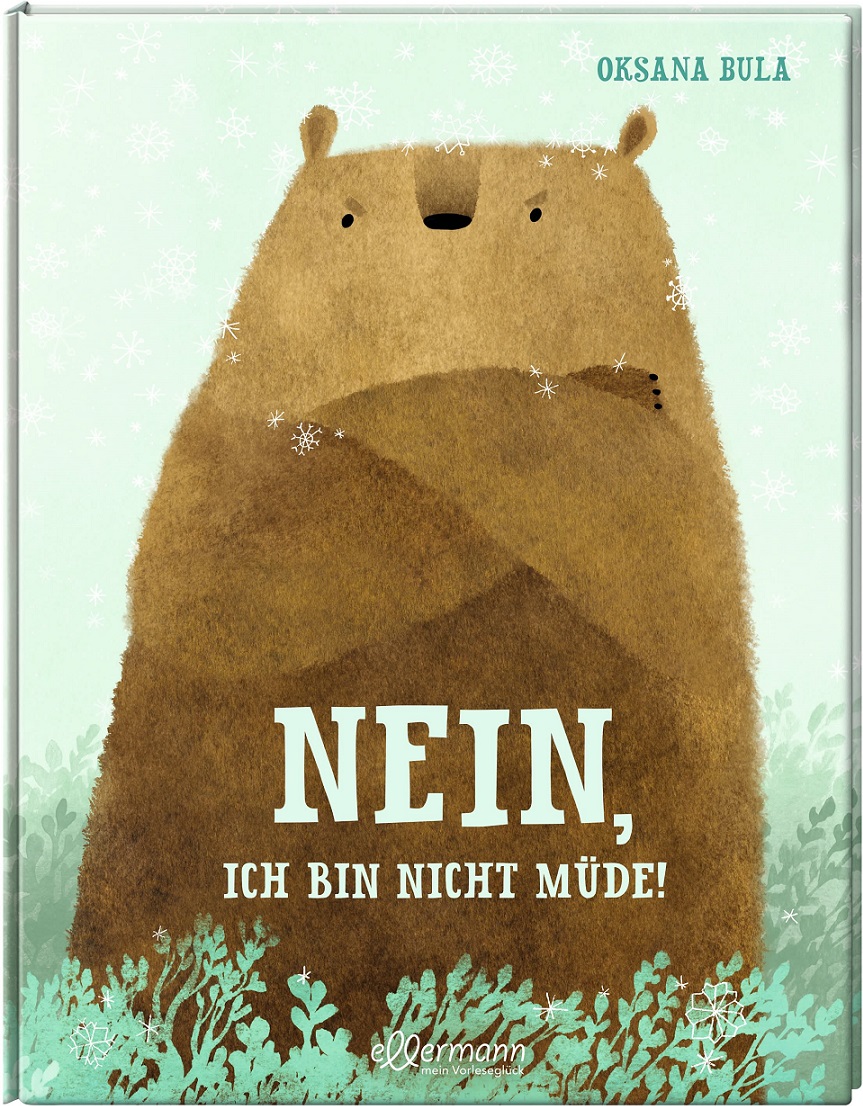Enchanting Forests and Magical Creatures - Oksana Bula’s Gentle Story World of the Tukoni By Luca Fasold
Published: 9 May 2023
Blog by CLMC student Luca Fasold
In an autumnal forest, the bear and the wisent meet and talk about what they will do during the upcoming winter. Both are fascinated by what the other has to say. The bear would also like to see the snow he usually misses while hibernating. Like every year, the Tukoni, small creatures of the forest, come to prepare the bed for the bear. But the bear does not want to sleep. No matter what the Tukoni prepare, no nest is comfortable enough for the bear. The wisent, too, would like to have a different winter after talking to the bear. While the bear gets to sleep in a cozy nest until spring, the wisent needs to look for food in the cold. But the Tukoni are too busy putting the wisent to bed.
The world of the Tukoni is the creation of Ukrainian author and illustrator Oksana Bula, who is known for her gentle and nature-embedded picturebooks, such as the award-winning Bison looks for a nest (2016). German publisher Ellermann Verlag joined her two stories into a double-sided picturebook with opposing, yet complementing protagonists. The reader can start with the wisent’s or the bear’s perspective on their encounter with the Tukoni and their preparation for winter. While a reunion of the protagonists at the end of the stories is missing, an illustration of the silent winter forest links the two narratives once more.
Nein, ich bin nicht müde! / Ja, ich will ins Bett (Bison Looks For A Nest / Bear Does Not Want to Sleep) are two stories with two protagonists wanting to experience a different winter. The Tukoni, the magical creatures accompanying the heroes, are recurring characters in Bula’s stories. These calm creatures take care of the trees, flowers, and animals of the forest, and guide them through the seasons. Bula says: “It is difficult to say how these characters were born. Certainly, they are alive and real to me. I like their world. It’s nice that they allow me to pry into what’s happening there.” Bula draws her inspiration from nature, but also from myths and legends.
Bula’s picturebook is a story about being curious about the unknown and breaking habits. At the same time, the animals’ wishes allow them to see what they know with new eyes: The wisent admires the beautiful patterns of the snowflakes and the bear nestles down in a cave prepared by the Tukoni in the end. Bula’s illustrations conjure a gentle and enchanted world. The simple, geometrical but soft shapes and rich autumn colors, alongside the vivid details of natural patterns, invite us to imagine the forest beyond the portrayed thicket. While the background is often filled with these patterns, the central characters are drawn in rough shapes with soft textures and surprisingly small eyes, arms, and claws. Minimal changes in the shape of the eyes and the direction of the ears transmit emotions and thoughts. Therefore, only a little text is needed and the atmosphere of the illustrations takes effect across double spreads without disruption. Occasional thought bubbles are drawn in pencil illustrations, and mark a border between the perceived and the reality of the picturebook. In moments where the wisent or the bear address the Tukoni directly, the hand lettering of the speech bubbles mirrors the protagonist’s demeanor: While the bear is demanding in capital letters, the wisent shyly asks for their attention in friendly handwriting.
Without drawing a direct comparison to the human world, Bula’s stories can be read to children who either do not want to go to sleep, or do not want to leave the bed. However, it is not a picturebook with an obvious lesson that can be learned. The stories invite curiosity from within the narrative as well as from the images. Moreover, the story world invites the readers to go outside into nature and look for the magical in the forest: for colors, shapes, and patterns that can be found, as well as for tiny fantastical creatures watching over the inhabitants of the forest and hiding in the shadows.
The picturebook’s calm and gentle atmosphere reminds us of the Japanese genre “Iyashikei”, which entails peaceful stories in calming environments to have a healing effect on the audience after traumatic events. Themes of nature, nurture, home, and the familiar in the picturebook allow reassurance for children and adults alike. Oksana Bula’s stories offer an escape into a simple and peaceful world. When asked how the Tukoni are perceived in Ukraine and abroad, Bula says: “I don’t think the country matters. Tukoni are interesting everywhere, because there are people everywhere, as if we all come from a single forest.” Bula’s stories promote ideas of unity, inclusion, peace, and friendship—much needed in our world today.
While Bula’s picturebooks have not been translated into English yet, they have been issued in other languages, including French, Spanish, and Vietnamese. Moreover, Bula has illustrated other picturebooks, such as Sunfish and Moonlight by Lisa Aarden. Her newest picturebook The Heather Moth was issued in 2022. A book trailer of Nein, ich bin nicht müde (No, I’m not tired— here the bear does not want to sleep). Another project that allows the readers to enter the calming world of the Tukoni is a small point-and-click puzzle.
Book Details
Nein, ich bin nicht müde! / Ja, ich will ins Bett (Bison Looks For A Nest / Bear Does Not Want to Sleep)
Oksana Bula (auth.&illust.)
Thomas Weiler (transl.)
Hamburg: Ellermann Verlag, 2020

First published: 9 May 2023

